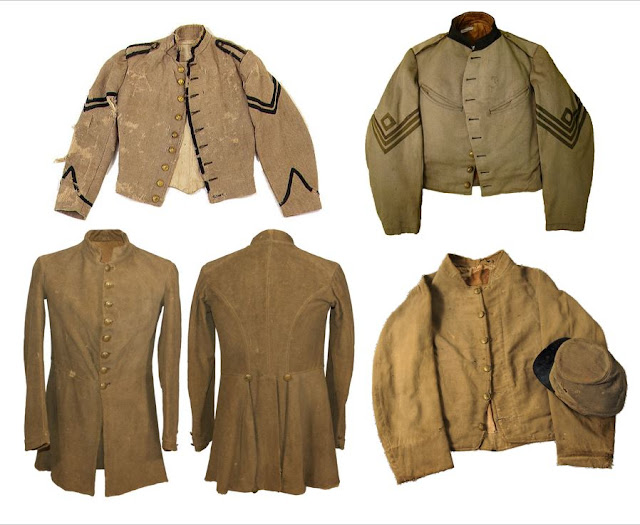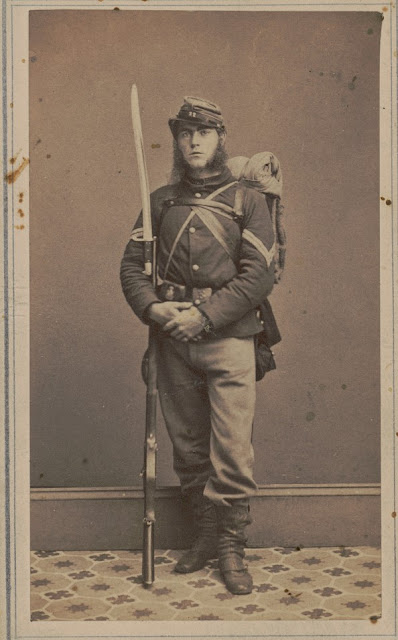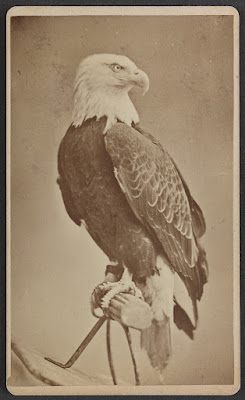Like Spears of Grass Before the Flames: Charging Fort Donelson with the 14th Iowa
For future Congressman William H. Calkins, the sight at dawn on February 16, 1862, repaid manyfold the privations and sufferings he experienced during the days in front of Fort Donelson.
"The first gray streak of daylight displayed a white flag streaming from off the tops of the surrounding breastworks," he noted in a letter to the editors of the Lafayette Journal & Courier. "If you can imagine the feelings of our troops when they saw the rattlesnake flag fall and the glorious stars and stripes waving in triumph over the Rebel fort. It paid us tenfold for our suffering. To pay us for our gallant bravery, we had the honor to march in front of the long line of troops into the fort. General Floyd escaped as did General Pillow, but Generals Buckner, Johnson, and West were captured. There were from 10,000-12,000 prisoners taken and a rough-looking set I tell you."
A member of the 14th Iowa Infantry, Lieutenant Calkins' description of the victory at Fort Donelson first appeared in the February 22, 1862, edition of the Lafayette Journal & Courier published in Lafayette, Indiana.
Fort Donelson, Tennessee
February 18, 1862
Editor Lafayette Courier, dear sir,
I do not wish
to enroll myself among the many army correspondents or newspaper contributors,
but as I am somewhat partial towards your excellent sheet, I though it would
not come amiss to give you the facts with regard to the battle and victory just
gained by the brave boys of the western states.
It will be
folly for me to undertake a description of the fort but suffice it to say that
it is admirably constructed and could have easily been made impregnable against
any number of troops. The attack was made on the fort by General Smith’s
division on the 13th instant; Colonel Lauman’s brigade, composed of
the 2nd, 7th, and 14th Iowa regiments and the
25th Indiana was ordered to storm the southwest barricadement. We
advanced from the summit of a hill on which we had encamped the night previous
and had scarcely moved 100 yards when the batteries of the Rebels opened out a
deadly fire of grape and canister from their entrenchments, however, the
gallant soldiers were not to be daunted by a few missiles of death.
Onward we sped until we reached the
foot of the hill. Then we were ordered to halt and form the lines which were
scattered and broken by the thick underbrush and timber which had been felled
by the Rebels to impede our progress. We soon formed the lines and “onward” was
the cry. We pushed forward until within about 100 yards of the entrenchment.
The timber that had been felled by the Rebels proved effectual, for the large
trees fallen in all directions proved an insurmountable barrier for us, and the
order was given to halt and give them a few rounds from our muskets which we
did with telling effect. We completely kept them down behind the entrenchments
and fought them five hours under a heavy fire from two batteries. The fallen
timber proved quite advantageous for us; had it not been for this, we would
have been badly cut to pieces from the battery. And here suffer me to pronounce
an encomium on the 25th Indiana: they suffered severely, being very
much exposed, but they fought like heroes.
 |
| Colonel Jacob Lauman, Brigade Commander |
When night
came, we were ordered to fall back and encamp upon the ground where we camped
the previous night. The next day, our division was still, but on the extreme
right, we heard heavy cannonading and musketry. And let me say here that never
in the annals of history was there a more severe contest that took place than
did on the right of the army. Floyd with his whole division came out of their
dens and attacked the Illinois brigade in General McClernand’s division. Floyd’s
division numbered 7,000 strong, supported by 2,000 cavalrymen, making a total
of 9,000 men. The Illinois brigade was composed of four broken regiments, the
total of the whole brigade did not exceed 2,500 men, odds of almost four to
one.
The Rebels
advanced and commenced the attack. Our brave boys drove them back with tremendous
slaughter. Again, they advanced and were driven back with awful loss. A third
time, they railed and presented a different front, for they had learned the
extent of our lines and outflanked us on the extreme right. Their cavalry made
a rear attack at the instant they came up but, nothing daunted, our brave boys
drove them from their position, about faced, and charged on the Rebel cavalry,
running them clear out of the state for they have not been heard of since. Our
ammunition gave out and we were obliged to fall back. We were soon reinforced
by the Kentucky brigade and the Rebels were driven from their hiding places and
went back inside their breastworks in great confusion and disorder. Such as the
scene of the second day.
The third day
being the 15th instant, we found we had work to do yet. Orders came
to storm the breastworks of the enemy at all hazards. Colonel Lauman’s brigade
was selected for the work. We marched out a distance of a quarter of a mile
below the place where we first attempted the work. The division advanced; they
opened a deadly fire upon us and our boys fell like spears of grass before the
flames. But soon the scene changed. Our boys mounted the works and over they
went. The Rebels fell thick and fast, but night set in and we were obliged to
ceased firing.
That night was
truly a night of suffering to us. It had rained and the mud in the ditches was
very deep and we were obliged to lay in the mud beneath the canopy of heaven
while the bombshells played around us like hail and terra firma froze beneath us.
We thought of the happy ones at home and envied them their places. But morning
came and all was still. The first gray streak of daylight displayed a white
flag streaming from off the tops of the surrounding breastworks. If you can
imagine the feelings of our troops when they saw the rattlesnake flag fall and
the glorious stars and stripes waving in triumph over the Rebel fort. It paid
us tenfold for our suffering. To pay us for our gallant bravery, we had the
honor to march in front of the long line of troops into the fort.
General Floyd escaped as did General Pillow, but Generals Buckner, Johnson, and West were captured. I will not try to give you an estimate of the killed. One of the Virginia boys told me that his regiment numbered 800 and when they surrendered, they had 150 all told. There were from 10,000-12,000 prisoners taken and a rough-looking set I tell you. Very soon, we will see New Orleans, but I must close.
To learn more about the charge of the Iowans at Fort Donelson, please check out this other post:
Buckeyes Among Hawkeyes : Ohioans at Fort Donelson with the 2nd Iowa
Source:
Letter from First Lieutenant William Henry Calkins, Co. H, 14th
Iowa Volunteer Infantry, Lafayette Journal & Courier (Indiana), February
22, 1862, pg. 3











Comments
Post a Comment